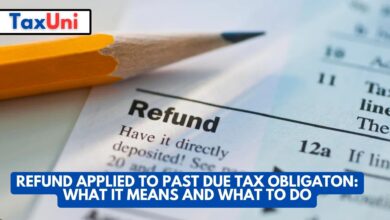New Mexico Income Tax Brackets
New Mexico income tax brackets are the rates at which a person's taxable income is taxed. A higher income means a greater tax burden.

Contents
Like many states, New Mexico imposes a state income tax on individuals and businesses operating within its jurisdiction. This tax is crucial for funding various state services, including education, healthcare, and infrastructure. Understanding how these taxes are structured and applied can help taxpayers plan and comply effectively. New Mexico uses a progressive income tax system, meaning that the tax rate increases as the taxpayer’s income increases. The tax brackets start at 1.70% for single taxpayers and go up to 5.90%. This system is designed to ensure that those with higher incomes contribute a larger percentage of their earnings to state taxes while those with lower incomes pay a smaller percentage. The tax rates and income brackets vary depending on the taxpayer’s filing status, which can be single, married filing jointly, head of household, or married filing separately.
New Mexico Income Tax Brackets for 2025
| Income Range | Tax Rate | Single Filers | Married Filing Jointly | Head of Household | Married Filing Separately |
|---|---|---|---|---|---|
| $0 – $5,500 | 1.70% | $0 – $5,500 | $0 – $8,000 | $0 – $8,000 | $0 – $4,000 |
| $5,501 – $11,000 | 3.20% | $5,501 – $11,000 | $8,001 – $16,000 | $8,001 – $16,000 | $4,001 – $8,000 |
| $11,001 – $16,000 | 4.70% | $11,001 – $16,000 | $16,001 – $24,000 | $16,001 – $24,000 | $8,001 – $12,000 |
| $16,001 – $210,000 | 4.90% | $16,001 – $210,000 | $24,001 – $315,000 | $24,001 – $315,000 | $12,001 – $157,500 |
| Over $210,000 | 5.90% | Over $210,000 | Over $315,000 | Over $315,000 | Over $157,500 |
Key Points About New Mexico Income Tax System
- Progressive Tax System: New Mexico’s tax system ensures that higher-income earners pay a larger percentage in taxes, which can help reduce income inequality and generate revenue for state services.
- Filing Status Matters: Your filing status significantly influences the amount of tax you owe. For example, married couples filing jointly generally benefit from higher income thresholds for each tax rate compared to single filers or married individuals filing separately.
- Tax Rates Vary by Income: Lower income ranges are taxed at a lower rate, starting at 1.7%, while higher income ranges can be taxed up to 5.9%. This structure is designed to be equitable, ensuring that tax burdens are proportionate to the taxpayer’s ability to pay.

Filing and Paying New Mexico Taxes
Taxpayers in New Mexico are required to file state income tax returns annually, typically by April 15, similar to the federal tax deadline. If April 15 falls on a weekend or holiday, the deadline is extended to the next business day. Taxpayers can file their returns online through the New Mexico Taxation and Revenue Department’s website, which also provides resources and guidance for accurate filing.
New Mexico Tax Deductions and Credits
New Mexico offers several deductions and credits that can reduce your taxable income or tax liability, including:
- Standard Deduction: Aligned with federal standard deduction amounts.
- Itemized Deductions: For taxpayers who opt to itemize their deductions instead of taking the standard deduction.
- Tax Credits: These include child care credits, working families tax credits, and renewable energy credits, among others.
These deductions and credits are designed to reduce residents’ tax burdens and encourage behaviors that benefit the economy and the environment.





